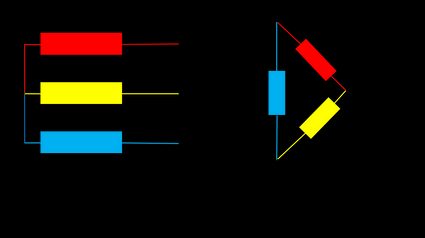Watts to Amps Calculator
Welcome to the watts-to-amps calculator, a tool that converts watts to amps and vice versa.
Apart from knowing the wattage, to perform the watts-to-amps conversion, you must know the voltage and type of current. Keep reading this article to learn more about those types of current and the formulas for watts-to-amps calculations.
The current and voltage types of this amps calculator
Before making conversions from watts to amps in this calculator, you must be aware that there are three types of current:
- Direct current (DC): DC is the current that flows in one direction only. DC is produced by devices such as batteries, solar panels, and fuel cells and is commonly used in computers, phones, and TVs. We can also use it to power electric motors and heat and cool buildings. One advantage of DC over AC is that we can easily convert it to other forms of energy, such as heat or light.
- AC - Single-phase current: Alternating current (AC) periodically switches directions (forward and backward). Single-phase current is a type of AC that consists of one sinusoidal voltage wave. The main advantage of single-phase over three-phase is that it requires less conductor material to transmit a given amount of power due to the lower currents involved. For that reason, it usually uses only two wires and is present in most domestic applications.
- AC - Three-phase current: This type of AC consists of three sinusoidal voltage waves that are phase-shifted by 120 degrees. It is typically used for industrial and commercial applications where higher voltages and power levels are required, usually requiring three wires instead of two. There are two types of configuration for three-phase current:
- Delta connection - referring to Line-to-Line Voltage; and
- Star connection - referring to Line-to-Neutral Voltage.
The star connection (also called a Y-connection) is an electrical connection in which all the conductors converge to a single point. In contrast, the conductors are arranged in a triangular configuration in a delta connection. Star and delta connections are often used in power systems to provide different levels of voltage and current. Delta connections are typically used for high-power applications, while star connections are more common for low-power applications. The choice depends on the specific needs of the system. In the following image, you can look at an example diagram of these configurations:

Now, let's look at the formulas used by this watts-to-amps calculator.
Formulas to convert watts to amps
Electric current can also be a power source (measured in watts) so that it can release or transport some energy. Whenever you hear that somebody wants to make a watts-to-amps conversion or vice versa, that person wants to find the relation between the amperage and electric power.
The formula to convert watts to amps and vice versa relies on the Ohm's law and the electrical power concepts, which you can learn more about in the Ohm's law calculator and the electrical power calculator. For now, let's focus on formulas to calculate the amperage for each type of current, which are:
-
Direct current (DC):
I = P/V
-
Single-phase current:
I = P/(V × pf)
-
Three-phase current:
- I = P/(√3 × V × pf) for line-to-line voltage; and
- I = P/(3 × V × pf) for line-to-neutral voltage.
, where:
- I — Amperage, calculated in amps (A);
- P — Electrical power, in watts (W);
- V — Voltage, in volts (V); and
- pf — Power factor.
The power factor indicates how well a device or appliance uses electricity. Mathematically, it is the amount of real power (measured in watts) divided by the apparent power (also measured in watts). It ranges from 0 to 1. A power factor of 1.0 means that all the power consumed is being used to do work; a power factor lower than 1.0 means that some power is being wasted. You can learn more about this in our power factor calculator.